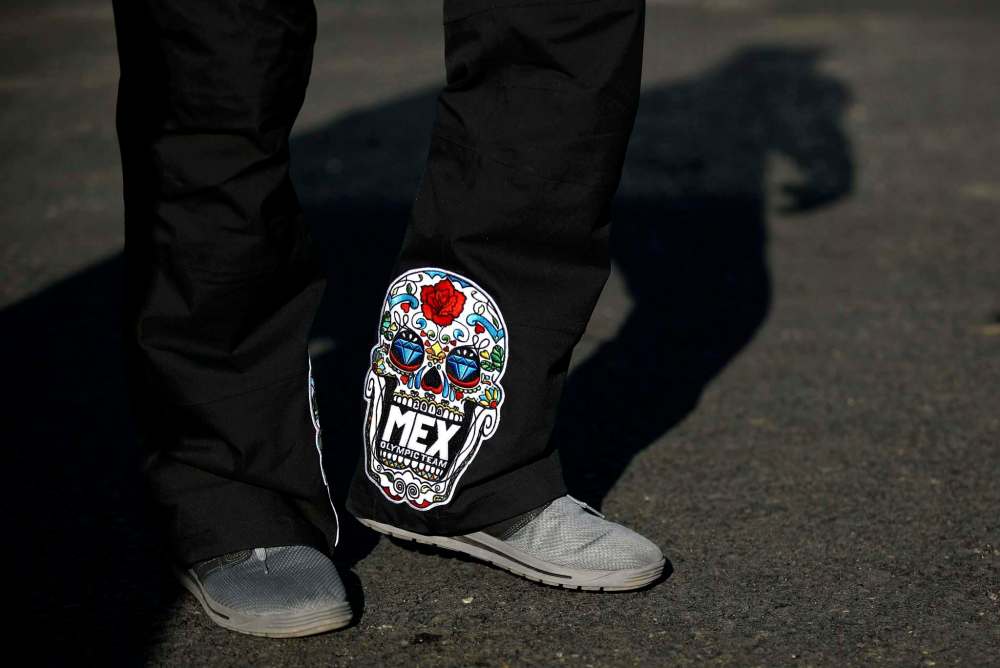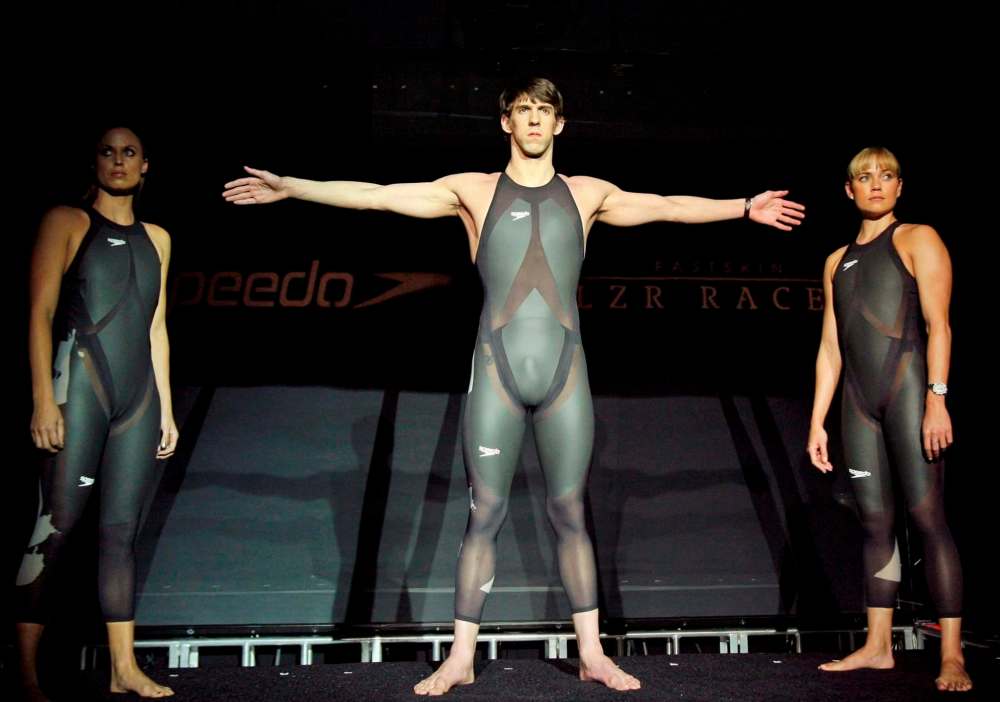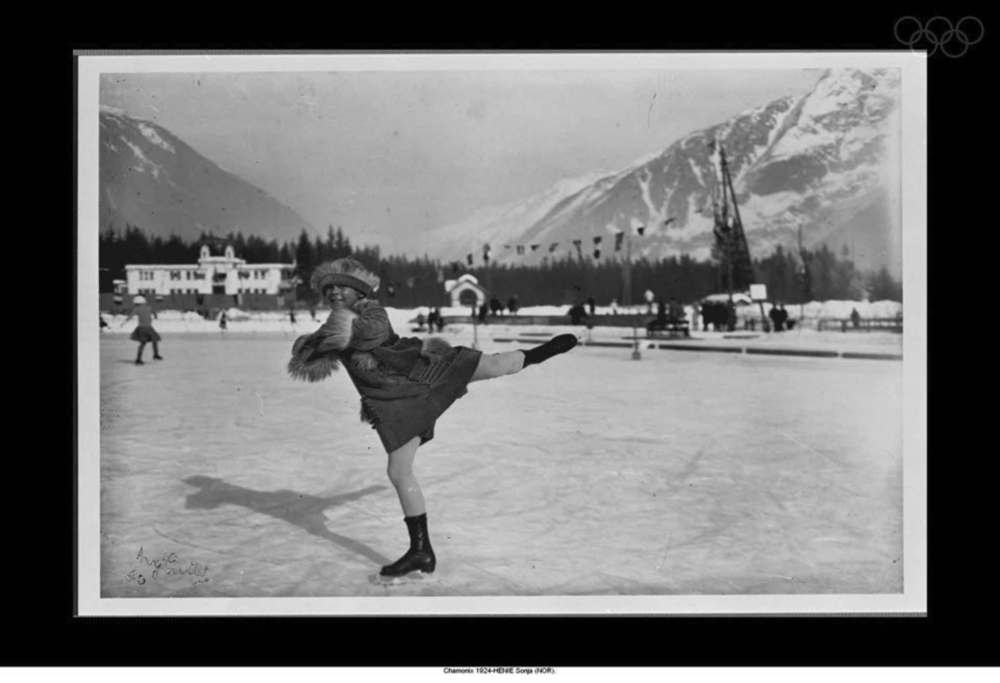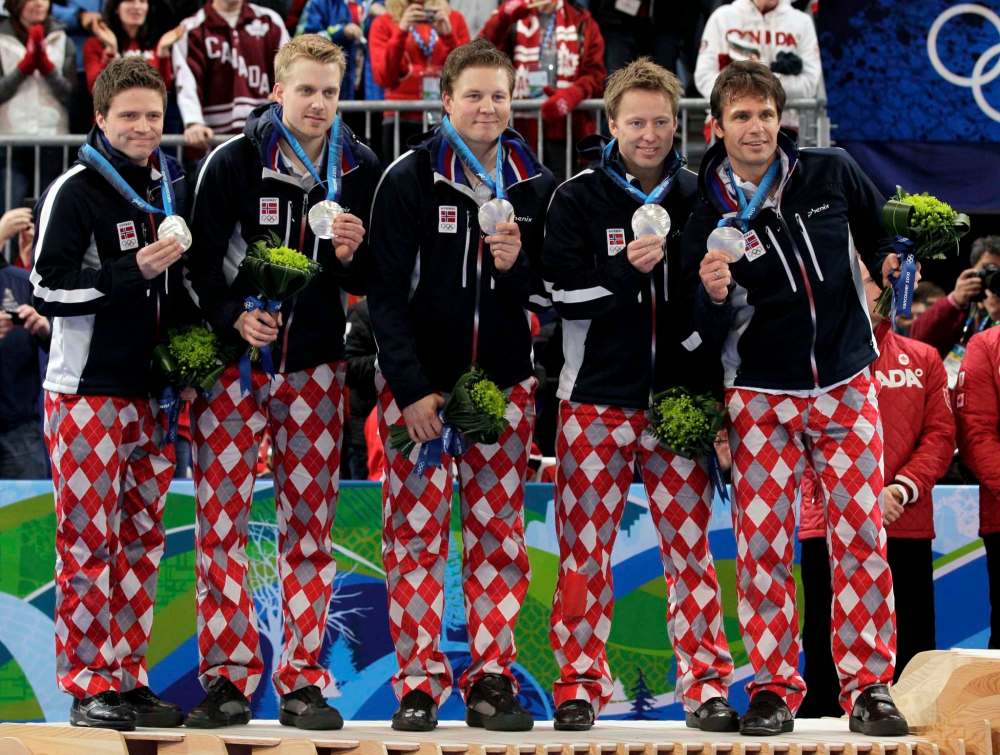Dazzling duds
Olympians steal show with sharp sartorial sense
Advertisement
Read this article for free:
or
Already have an account? Log in here »
To continue reading, please subscribe:
Monthly Digital Subscription
$0 for the first 4 weeks*
- Enjoy unlimited reading on winnipegfreepress.com
- Read the E-Edition, our digital replica newspaper
- Access News Break, our award-winning app
- Play interactive puzzles
*No charge for 4 weeks then price increases to the regular rate of $19.00 plus GST every four weeks. Offer available to new and qualified returning subscribers only. Cancel any time.
Monthly Digital Subscription
$4.75/week*
- Enjoy unlimited reading on winnipegfreepress.com
- Read the E-Edition, our digital replica newspaper
- Access News Break, our award-winning app
- Play interactive puzzles
*Billed as $19 plus GST every four weeks. Cancel any time.
To continue reading, please subscribe:
Add Free Press access to your Brandon Sun subscription for only an additional
$1 for the first 4 weeks*
*Your next subscription payment will increase by $1.00 and you will be charged $16.99 plus GST for four weeks. After four weeks, your payment will increase to $23.99 plus GST every four weeks.
Read unlimited articles for free today:
or
Already have an account? Log in here »
Hey there, time traveller!
This article was published 17/02/2018 (2825 days ago), so information in it may no longer be current.
The spectre of death is a constant companion for Olympic skiers as they race down mountains at break-neck speeds.
This is especially true for the members of Mexico’s alpine ski team putting their lives and limbs on the line at the 2018 Winter Olympic Games in Pyeongchang, South Korea.
It’s not that they’re more prone to catastrophic falls; it’s just that they’ve been stealing the show thanks to eye-catching uniforms celebrating Dia de los Muertos, Mexico’s “Day of the Dead” holiday during which families and friends remember those who have died.
The Mexican race suits feature colourful, bejewelled and beflowered skulls set against a black background, and were designed by Hubertus von Hohenlohe, 59, a skier who represented Mexico at six Winter Games and failed in his bid to become the oldest Winter Olympian this year.
While the Mexican skiers aren’t medal favourites, their haunting outfits are the hit of the Games, with one Twitter user chirping: “Everyone else should just go home now because the Mexican alpine ski team just won the entire Olympics with these uniforms alone.”
But they’re not the first athletes to let their uniforms do the talking, as we see from today’s stylish list of Five of the Boldest Fashion Statements in Olympic History:
5) The fashion champion(s): The 2010 U.S. snowboarding team
The fashion statement: Faux lumberjack shirts and blue jeans

Strutting their stuff: For snowboarders, it’s all about style. You have to be stylish while you’re flipping around in mid-air like a flying squirrel, and you have to be stylish while you’re chugging down a soy latte in the athletes village. But whipping up uniforms for snowboarders is a serious challenge, because these hip Olympians are all about their individuality.
“Board sports, for the most part, are about expressing individuality — that’s what makes them cool,” Greg Dacyshyn, creative director for Burton, the famed snowboard equipment company that has outfitted U.S. riders at the past four Games, said in 2009. “So the whole uniform thing, you know, it’s a sensitive subject.”
The boarders’ jackets were designed to resemble red, white and blue plaid flannel shirts, whereas the snowboarding pants were designed to look exactly like a pair of well-worn blue jeans, complete with faded colouring and minor tears in the fabric.
“There’s nothing more American than blue jeans,” Dacyshyn said at the time. “And this time around, we wanted something that spoke more to snowboarding, a look that speaks to the sport’s individualism and character… The inspiration was sort of that classic Americana look: the plaid blazer and old jeans. Yeah, it’s a uniform, but it’s also an anti-uniform at the same time.”
Observed ESPN.com: “This made (Shaun) White and his teammates look like refugees from a 1990s grunge video, but that didn’t stop White from capturing gold in the halfpipe.”
4) The fashion champion: U.S. sprinter Florence Griffith Joyner (“Flo-Jo”)
The fashion statement: One-legged track suits and fingernails like tiger claws
Strutting her stuff: To say Florence Griffith Joyner was fast is an understatement. Who we’re talking about here is the fastest woman in the world. The woman famously known as “Flo-Jo” died in her sleep in 1998 as the result of an epileptic seizure, but the speed records she set at the 1988 Summer Games in Seoul, South Korea, still stand.
In her obituary, the New York Times said: “Known by the abbreviation ‘Flo-Jo’ — even her name was fast — she set the world record for 100 metres at 10.49 seconds at the 1988 Olympic trials in Indianapolis, then established the mark of 21.34 seconds in winning the 200 metres at the 1988 Summer Games in Seoul, South Korea, where Griffith Joyner also won gold in the 100 metres and the 4×100-metre relay. She also took a silver medal in the 4×400-metre relay.”
In 1988, she started wearing a running suit with the right leg extending to the ankle and the left leg cut off, a style she dubbed the “one-legger.” But her trademark was her fingernails, which were six inches long and, for the Games, painted red, white, blue and gold. At the time, other runners eschewed anything that might slow them down.
In a 2016 article, fashion magazine Vogue said it best: “Long before athleisure, there was ‘Flo-Jo,’ who blazed trails in fashion as she left competitors in the dust. Dazzling crowds in her custom, asymmetrical one-legged track suits and six-inch-long manicure (decorated with American flags or in the hopeful shade of gold), the former hair-and-nail technician would take off sprinting down the stretch, curls blowing in the wind.
It was a true departure from the jocky, gym-bound look of her fellow Olympians, a vibrant fashion-forward take unlike any the sports world had ever seen.” In other words, she nailed it.
3) The fashion champion(s): Michael Phelps and every elite Olympic swimmer
The fashion statement: Full-body, high-tech swimsuits

Strutting their stuff: In 1972, at the Summer Games in Munich, U.S. swimmer Mark Spitz won seven gold medals wearing nothing more than a skimpy Speedo swimsuit and his trademark moustache. How times change.
In 2000, just before the Summer Games in Sydney, Australia, full-length high-tech swimsuits blazed onto the sporting scene, sported by superstars like a young Michael Phelps of the U.S. and Ian Thorpe of Australia.
“Made of water-repellent polyurethane fabrics that compressed the swimmer’s body to make it more streamlined, buoyant and less fatigue-able, the suits have been making waves in the world of swimming for years,” EETimes.com said.
Critics complained the high-tech suits constituted a form of “technological doping.” The speedy suits skyrocketed to fame at the 2008 Summer Games, especially the Speedo LZR, a full-body, 50 per cent polyurethane swimsuit sported by Phelps, who stroked his way to eight gold medals and broke seven world records in Beijing.
According to ABC News, since their introduction, the suits led to nearly 200 world records. In 2009, international swimming’s governing body, FINA, voted to ban the high-tech swimsuits that, according to the New York Times, “have been likened to doping on a hanger.” In its ruling, FINA decided swimmers would have to show a little more skin, meaning men’s suits could maximally cover the area from the waist to the knee, while women’s suits went from the shoulder to the knee. It also ruled that the fabric used must be a “textile” or a woven material and that a suit may not have any fastening devices such as a zipper.
It was too little too late for veteran sports journalist Christine Brennan, who told ABC: “Unfortunately, it has rendered its record book worthless. It sadly is a joke because so many records have been broken with the new suit. These records will not be touched for years, if ever, because they were broken by swimmers using suits that will now be illegal.”
2) The fashion champion: Norwegian figure skater Sonja Henie
The fashion statement: Short skirts

Strutting her stuff: Anyone who has spent any time on their couch watching Olympic figure skating knows the costumes, especially those worn by the women, appear to consist of little more than a few handkerchiefs held together by fishing line.
Well, it wasn’t always that way. “In the early days of figure skating, women traditionally wore long skirts, sometimes down to their ankles,” according to an article on classic moments in Olympic uniform history on ESPN.com. “
Norwegian phenom Sonja Henie, who first competed at the 1924 Games in Chamonix, France, as an 11-year-old, changed all of that. She was the first Olympian to skate in skirts that ended above the knee and the first to wear white skate boots. It all worked out pretty well for her, as she won gold medals in 1928, 1932 and 1936.” By hoisting her skirts from ankle to a shocking knee length, Henie found it easier to perform jumps.
In her obituary, the New York Times said: “She won the first of 10 consecutive world skating titles at Oslo in 1927, captivating the crowd with her ballet style, a white silk and ermine costume and short skirt and a dimpled smile.”
Along with three Olympic golds, Henie was a 10-time world champion and a six-time European champion. At the height of her career, Hollywood came calling and she signed a contract making her one of the highest-paid actresses of her day.
Her box-office smashes included Thin Ice (1937), My Lucky Star (1938), Second Fiddle (1939) and Sun Valley Serenade (1941). According to Vanity Fair magazine: “She was called ‘the Nasturtium of the North,’ ‘the Ice Queen of Norway,’ ‘The White Swan’ and, less flatteringly, ‘Little Miss Moneybags…
When she died, in 1969, her holdings were estimated at more than US$47 million.”
In a nutshell, Sonja Henie was the world’s first superstar. She achieved this despite controversy over an uncomfortably close relationship with Adolf Hitler. She reportedly greeted the dictator with a Nazi salute at one Games and accepted an invitation to lunch at his resort home, where he gave her an autographed photo.
1) The fashion champion(s): Norway’s men’s curling team
The fashion statement: Pants that can be seen from the International Space Station


Strutting their stuff: It is reasonable to assume you are making a fairly loud fashion statement if your pants have their own Facebook page. That’s the case with the Norwegian men’s Olympic curling team. Seriously, a Facebook page entitled “The Norwegian Olympic Curling Team’s Pants” currently has almost 500,000 “likes” and about 407,000 regular followers.
Since the Vancouver Games in 2010, Norway’s pants have been doing a lot of talking.
“Everyone snickered when the Norwegian curling team showed up at the 2010 Vancouver Games in an assortment of garish Loudmouth Golf trousers,” according to ESPN.com. “But they weren’t laughing when the Norwegians took home the silver medal.”
Here’s what this columnist wrote back in 2010: “There isn’t much crying in curling, since not many people are able to stay awake for an entire game. But then I tuned in to watch Canada battle Norway and got a look at the Norwegian team’s pants, which are covered in red, blue, grey and white diamonds. I will be polite here and just say it’s impossible to look directly at these pants without causing permanent damage to your retinas. Circus clowns would refuse to wear these pants on the grounds they are ‘too gaudy.’”
At the 2014 Sochi Games, Loudmouth whipped up some pants featuring the Norwegian flag, and another outfit with high socks and knickers. The team’s distracting trousers in Pyeongchang include ones that make them look like they were the losers in a paintball battle.
On Valentine’s Day, they swept fans off their feet in candy-pink pants adorned with pink and red hearts. They have many more outfits for the rest of the Games. The wacky strides have reportedly helped the Norwegians pocket some hefty bucks to cover travel expenses. No doubt they can afford a few stiff belts. Considering the spotlight is on their pants, it appears safe to say their britches are getting too big for them.
Buckle up, there’s more curling to come.
doug.speirs@freepress.mb.ca







